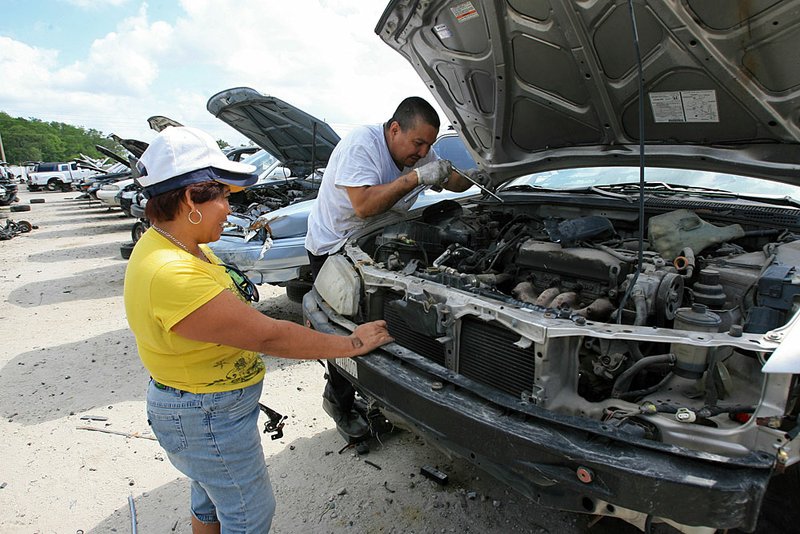LITTLE ROCK — I have an older car that I’ve kept in pretty good condition, but it’s reaching an age where fixing it with used auto parts might be a better bet than buying new parts. But I’m not sure whether this applies to all auto parts. And how do you tell if the place you’re buying them from is honest?
We turned to two resources: a Consumer Reports article, “How to buy used car parts,” in its March 2011 issue, and cartalk.
com, the website of Tom and Ray Magliozzi, whose syndicated column runs in this section each week.
“Serviceable used parts can cost a fraction of what you’d pay for new ones,” said CR. “For instance, buying a used passenger seat for a 2003 Buick LeSabre runs about $100; the official price from Buick is $379 for just the cushion cover.”
The Magliozzis agree: “You can often save a bundle of cash.” They add three more reasons touse a salvage yard or recycler:
Every time you use a part from a recycler, you’re helping to save the environment.
When you buy a used part, you’re generally buying an original equipment manufacturer part.
“You’re buying a part that’s been field-tested! OK, maybe this last reason is a little lame,” they said. “But all the other parts on your car are used, right? Why run the risk of incompatibility and rejection?” The negative side:
“Many junkyards - oops, we meant ‘recyclers’ patrolled by rabid Dobermans - are owned by guys named Butch who swing crowbars first and ask questions later and are populated mostly by teeming colonies of tetanus bacteria.
“You might lug home a 400-pound part only to discover that it doesn’t work.
“You might install that 400-part only to discover that it doesn’t work.
“You might get your chinos dirty.”
Joking aside, not all recyclers are equal. Some are reputable and well organized, some are unscrupulous. They may remove parts from salvage vehicles, catalog and store them and bring the part you want to the counter. Others will go remove the part you need from a car out back and bring it to you. Yet others allow you to wander around the yard with tools and pull off the parts you want. Or they may charge a set fee for all the parts you can carry out in your hands.
So how do you go shopping? Here’s what the Magliozzis say:
If your mechanic will do the work, let him deal with the recycler.
Know what you need before you arrive. A recycler can’t diagnose your problems and tell you what part(s) to get.
Call a dealer and find out what the part costs new. Roughly speaking, try not to pay more than 50 percent of that for a used or rebuilt part.
Shop around by phone to check availability and compare prices. Generally, recyclers won’t negotiate on the price, but it never hurts to try. If only one place has the part you want, don’t let them know so there’s still a chance to haggle.
Almost all recyclers offer a warranty on the part; even on the labor, though often for a fee.
Consider a rebuilt part if the price is right in comparison to a used or new one.
Some parts are so inexpensive to buy new, such as belts, hoses and brake pads, that it’s hardly worth buying used ones. Be careful about some parts like brake calipers,starter motors and alternators if they’ve sat outside for a while.
The Magliozzis have developed a savings-risk matrix.
One axis is “savings,” the savings compared to the cost of a new part. The “risk” axis shows the risk of buying that particular part at a recycler.
The risk comprises two components: The part might not work, so installing it will be a waste of time; and the likelihood of serious injury or death if the part fails.
They then placed various parts on the graph. Included among high savings/low risk are tail lights, brake rotors and front-end components, for example. Brake pads are among the low savings/high risk items. And the junkyard dog? Very high savings but also very high risk.
To view this matrix, visit car talk.com/content/features/ Recyclers/matrix-2.html.
HomeStyle, Pages 34 on 02/26/2011

